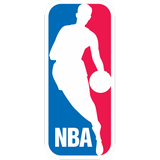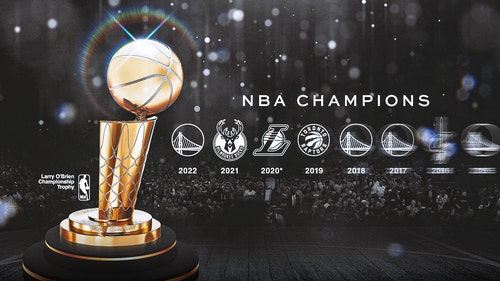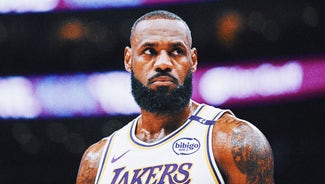
Template for Pierre Jackson thriving in NBA already exists
Proper sleep is essential for quality of life, energy and vigor throughout the day, and general well-being. If one oversleeps they could awake in a groggy state and the same can be stated for one who does not receive enough shuteye. Ask Pierre Jackson — whose coined the hashtag #TheySleep — and he will probably tell you the NBA has been in a coma in terms of seeing his overall skill level and potential.
The Baylor alum has endured in inauspicious genesis to his professional career. Two weeks after being drafted by the Philadelphia 76ers, Jackson was traded to the New Orleans Pelicans and after not signing with them spent his rookie season in the D-League, with the Idaho Stampede, and played a handful of games in Turkey. In the summer of 2014 he was traded back to the Sixers and then ruptured his right Achilles tendon on a routine play during NBA Summer League.
Jackson lost most of the next two years recovering, before resurfacing at the 2016 NBA Summer League with the Portland Trail Blazers. After being waived, he bolted to the Adriatic League, spent some time dominating for KK Cedevita decided to return to the D-League to make a play for the NBA.
READ MORE: Briante Weber makes no excuses or apologies
Now 25-years old, Jackson is 100 percent healthy and showing no ill-effects of his ruptured Achilles as he decimates opponents nightly as the starting point guard for the Texas Legends. The pairing has been a match made in heaven as Coach Bob MacKinnon runs an uptempo offensive attack to showcase his players’ abilities to the fullest. The team currently ranks first in pace (107.36) and second in PPG (116.2) and Jackson is the catalyst running the show, mainly out of the pick-and-roll.
One concern with Jackson’s NBA stock — along with how well he could recovery from his ruptured Achilles — has always been his size, or lack thereof. He stands a mere 5-foot-11 and comes in at 180 pounds. What he lacks in visual stature, he more than compensates for with explosive quickness, an ability to stop on a dime and pull-up for a jumper on a dime, and the tenacity to attack the rim and finish through contact.
One NBA comparison who immediately comes to mind is Isaiah Thomas. The diminutive, lefty heard a lot of the same concerns coming out of college and he’s translated into one of the more dynamic offensive guards in the NBA. Thomas is successful in large part due to his ability to navigate the pick-and-roll, choosing opportune times to shoot, attack or pass.
This is not to say Jackson could enter the league and be a top-10 scoring option like Thomas, but their games are eerily similar and Thomas has laid the blueprint for smaller guards to have success. Jackson could easily be a pick-and-roll dynamo off the bench for an NBA club right now and holding onto the “he’s too small” narrative is lazy and inaccurate. The sample size above for Pierre is just eight games of this D-League season, but his shooting ability paired with his ultra quick first step are the ingredients for a game-changing rotational guard.
Watch here is he utilizes the Jameel Warney screen to gain an advantage, blow by his defender, and finish among the trees:
Getting a defender off balance is only this easy when a guard also possesses a knockdown jump shot to keep their opponents honest. Jackson has shown his jumper to be flawless mechanically so far this season, and the lift he gets is again quite similar to Thomas.
When defenders aren’t fully engulfed by the screen, Jackson gives a hesitation fake, uses the screen to blow by and then can pull up with the big man who switches drops back. Watch here as he uses a behind-the-ball move to freeze Xavier Munford — who is a quality defender — then uses the Jaleel Cousins screen to gain space and pull-up before Perry Ellis can react in time.
Scoring itself is difficult to gauge in terms of how it will translate to the NBA level from the D-League. Past call ups have lit up the minor league, only to struggle at the next level. It’s important to bring other traits to the table and Jackson not only utilizes his speed to help himself, but often finds open teammates in the process.
Here Quincy Acy, a fellow Baylor alum, sets a good screen and when he rolls, Jackson finds him for a magnificent spin and finish by Acy.
So, we have now established Jackson can attack the pick-and-roll to attack the rim, pull up for a mid-range jumper or find a teammate if need be. Can he create his own shot in isolation? In the chart above you might have noticed that through eight games 78 percent of Jackson’s made field goals have been unassisted. He has absolutely no issues creating his own shots, even against large, defensively adept defenders.
Oklahoma City’s Josh Huestis got the task of guarding Jackson and, on this play specifically, did not fare too well.
Huestis is 6-foot-7 and, while he hasn’t gained his own foothold as an NBA player, is a quality defender in his own right. Pierre is a good eight inches shorter than Huestis and doesn’t hesitate to attack, create the necessary space and pull up for the step back jumper.
His numbers above focus more on where Pierre is finishing and at what rate, but his overall efficiency has been stunning for a player with his usage rate. Jackson is averaging 29.3 points a night while shooting 53.4 percent (18.3 attempts) overall and 40.7 percent (7.4 attempts) from 3.
Again, Jackson is only 25-years old and is still a prospect in terms of the NBA. After being drafted No. 42 overall in the 2013 NBA draft, he’s never played a single regular season minute of NBA hoops. Jackson back, he’s fully healthy, and there’s a template already in place for how he can be a viable cog for any team off the bench.
It’s time to wake up and give the cult classic Pappy Jack a chance.
More from FanSided
This article originally appeared on










